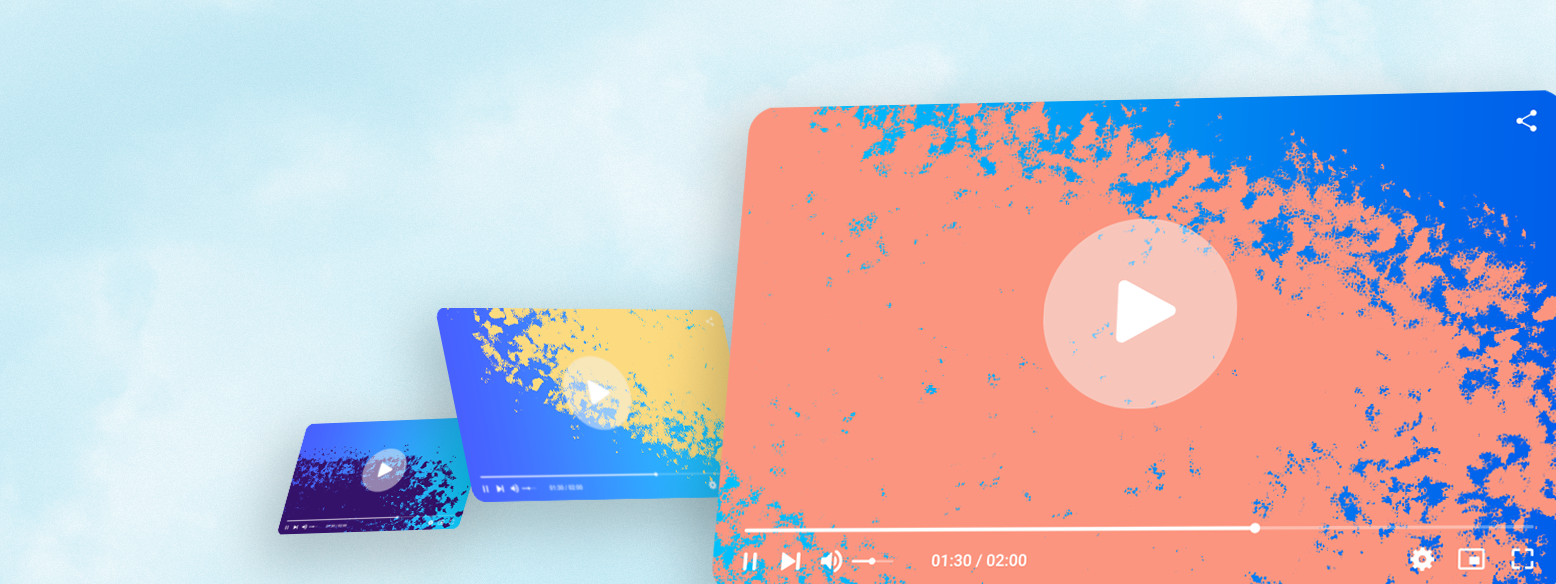So you made a video…

Usually when our clients are creating a video, the focus is on the substance of the video itself. What will be portrayed? How should we tell the story? Who needs to review what by when to complete the project?
This leads to some inevitable tunnel vision – naturally, you become so focused on completing the video, that you lose sight of what to do with it once it’s finished. While hosting it on your website is a natural next step, there’s far more value left to extract. With a little bit of editing and the right promotional strategy, you can turn your video into a valuable tool in your broader corporate communications toolbox.
Short-form video
When we talk about short form, we’re talking about a specific form of repurposing that leverages the component “microstories” that make up the overarching narrative of your video. For a patient video, one microstory might be the patient’s first symptoms or their initial diagnosis. In the MOA, it might be how your drug identifies its target or administers the therapy. While not always the case, if you have a video over 60-90 seconds in length, you’ll likely have multiple microstories in there.
Each of these parts carries an important message for your audience. We often recommend to our clients that they cut their full-length videos into these smaller bite-size pieces for use on social and other digital channels. The benefits here are two-fold:
- The bite-size snippet could entice users to navigate to your site to view the full video, say through a social post or as an ad
- Even if they don’t, they’ll still receive an important message in this microstory
You can further enhance these smaller cuts with a branded intro and outro. The intro might set up the piece of information the user will soon receive, while the outro may encourage the user to view the full video on your website.
The intent behind exploring the short form video approach is to give yourself optionality when considering where you’ll share your video. For instance, Hootsuite (a major social media software provider) recommends video lengths of 44 seconds and 30 seconds for Twitter and LinkedIn, respectively. On the other hand, you may have a speaking slot at a conference where you’re allowed to play a video before your presentation. In this instance a 60-90 second length may be more appropriate.
Applying short-form principles to common biotech videos
While the potential for video within a broader biotech comms strategy is vast, let’s consider how we can apply this short-form approach to a few of the most common types of videos we see.
- MOA or other science-focused explainer video:
- Consider making cuts for each “step” of the scientific process you’re depicting – leverage these on social, in your investor decks, and other materials where you’re communicating your science
- Pair one of these microstories with a broader thought leadership topic in your field – C4 Therapeutics does a great job of this by pairing biomedical animation with live-action video of their CSO on defining undruggable proteins
- Patient stories
- Break each part of the patient story into chapters, each focused on one specific component of the patient experience
- If you have multiple patient stories, consider creating a montage around one specific part of the patient experience, bringing in multiple voices on the topic
- Culture video
- If your corporate culture video features testimonials from multiple team members, consider making individual videos for each employee
- Another option is making shorter videos that focus on specific topics, such as your core values or your management structure
Promotion
Of course, there’s more to the promotion strategy than simply the length of the video. Understanding both the channel through which the video will be shared and your larger goals of your comms initiatives will inform the right promotion strategy. Below, we’ve outlined two common ones: a disease awareness campaign and conference promotion.
Disease awareness
Patient stories are great video content for use in a disease awareness campaign. By exploring human experience of a diagnosis, you can express the hardships of a disease that statistics otherwise couldn’t.
With this in mind, consider the following video strategy to help drive awareness for a disease campaign:
- Break your patient story into “chapters” (these are the aforementioned microstories)
- Over the course of a defined period of time, roll out each chapter on a week-by-week basis through your organic social channels
- Combine the above with targeted, paid social ads that target HCPs and other relevant audience demographics
This is an approach that we recently took with our partner Intellia Therapeutics around Amyloidosis Awareness Month, in which we saw some impressive results.
Conference Promotion
Another way to leverage a video is for promotion in the lead up to a major scientific conference. This is great for attracting attention to your conference presence, which can be especially helpful if you’re presenting new data or have exciting news to share. In this instance, we’ll leverage a more scientifically focused video:
- In the lead up to the conference, use your shorter-length videos (such as the one explaining a single step in your process) to announce your presence at the conference and what you’ll cover
- Use paid social and YouTube ads to reach the demographic of folks who will likely be attending the conference
- In the days shortly before, during and after the conference (in other words, when folks will be converging on the host city), geotarget these ads to the demographics you identified above
- If you have a speaking slot, use short clips of your video in your presentation to further illustrate the efficacy of your drug or mechanism
So what next?
No matter the focus of your video, concepts behind these strategies are the same. Identify what bite size messages you can extract from the full-length video and pair them with a promotional strategy to advance your campaign.

